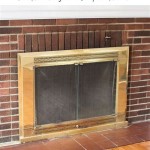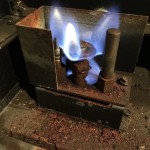Removing a Brick Wall Around a Fireplace: A Comprehensive Guide
A fireplace serves as a focal point in many homes, radiating warmth and character. Over time, however, design preferences evolve, and homeowners may find that a surrounding brick wall no longer complements their aesthetic vision. Removing a brick wall around a fireplace necessitates careful planning, precise execution, and adherence to safety protocols. This article provides a detailed guide to the process, covering assessment, preparation, demolition, and post-demolition considerations.
Assessing the Scope and Determining Feasibility
Before initiating any demolition, a thorough assessment of the project's scope and feasibility is crucial. This encompasses several key considerations. First, the load-bearing nature of the brick wall must be determined. If the wall is structural, removing it entirely without proper support could compromise the integrity of the building. Consult a structural engineer to evaluate the wall’s role and recommend appropriate support measures, such as installing temporary beams or posts, if needed. Load-bearing walls are more common in older homes, so extra scrutiny is advised.
Second, examine the fireplace itself. Determine if the brick wall is integral to the fireplace's structural support or simply decorative. Fireplaces often have a firebox, chimney, and flue system that relies on the surrounding masonry for stability and proper ventilation. Removing the brick without careful planning could affect the fireplace's functionality and safety. Again, consult a professional, specifically a qualified chimney sweep or mason, to assess the implications.
Third, identify and address any potential hazards. This includes checking for electrical wiring or gas lines embedded within the brick wall. If any utilities are present, they must be safely rerouted or capped off by qualified professionals before demolition begins. Neglecting this step could result in serious injury or property damage. Consult with licensed electricians and plumbers to ensure safe handling of utility lines.
Finally, consider the implications for adjacent walls and flooring. Removing the brick wall will likely require patching or repairing the surrounding surfaces. This may involve matching paint colors, replacing flooring materials, or addressing any structural damage that is revealed during the demolition process. Planning for these post-demolition tasks is essential for achieving a seamless and aesthetically pleasing final result.
Preparing the Work Area and Gathering Necessary Tools
Proper preparation is paramount to a successful and safe demolition project. Begin by clearing the work area of all furniture, decorations, and valuables. This will prevent damage and provide unobstructed access to the brick wall. Cover remaining furniture and flooring with heavy-duty plastic sheeting or drop cloths to protect them from dust and debris. Secure the plastic sheeting with tape to prevent shifting during the demolition process.
Gather the necessary tools and equipment. Essential items include a sledgehammer, brick chisel, masonry hammer, safety glasses, dust mask or respirator, work gloves, ear protection, a pry bar, a bucket for debris, and a wheelbarrow or heavy-duty containers for transporting the rubble. A circular saw with a masonry blade may be needed for scoring the brick to control the demolition and minimize damage to adjacent surfaces. A shop vacuum with a HEPA filter is crucial for containing dust and maintaining a clean work environment.
Adequate ventilation is critical to minimize exposure to dust and fumes. Open windows and doors to allow for airflow. Consider using a portable air purifier with a HEPA filter to further improve air quality. If possible, seal off the work area from the rest of the house with plastic sheeting and tape to prevent dust from spreading.
Prior to commencing demolition, thoroughly wet down the brick wall with water. This will help to suppress dust and prevent it from becoming airborne. Continually dampen the brick during the demolition process to minimize dust exposure. This simple step significantly improves air quality and protects the health of the workers and occupants of the house.
Executing the Demolition and Addressing Post-Demolition Considerations
With the work area prepared and the necessary tools gathered, the demolition process can begin. Start by scoring the mortar joints with a brick chisel and masonry hammer. This weakens the mortar and makes it easier to remove the bricks. Work systematically, focusing on small sections at a time. Avoid using excessive force, as this can damage adjacent surfaces or compromise the structural integrity of the remaining wall.
Once the mortar is sufficiently weakened, use a sledgehammer and brick chisel to carefully remove the bricks. Work from the top down, prying the bricks away from the wall with a pry bar if necessary. Exercise caution when removing bricks near the top of the wall, as they may be less stable. Wear safety glasses and a dust mask or respirator at all times to protect your eyes and lungs from dust and debris.
As bricks are removed, immediately place them in a bucket or wheelbarrow for disposal. Avoid allowing debris to accumulate on the floor, as this can create a tripping hazard and make the work area more difficult to navigate. Once the brick wall has been completely removed, thoroughly clean the area with a shop vacuum and damp cloth. Remove all traces of dust and debris to prepare the surface for repairs and finishing.
After the demolition is complete, address any necessary repairs to adjacent walls and flooring. Patch any holes or cracks in the drywall with joint compound and sand smooth. Apply primer and paint to match the existing finish. If flooring materials need to be replaced, carefully remove the damaged sections and install new materials to seamlessly blend with the surrounding area. Consider consulting with a professional contractor for complex repairs or installations.
Finally, inspect the fireplace itself to ensure that it is in good working order. Check the chimney for any obstructions or damage. Have a qualified chimney sweep inspect and clean the chimney to ensure safe and efficient operation. Address any necessary repairs to the firebox or flue system before using the fireplace. Remember that safety is paramount, and a properly functioning fireplace is essential for preventing fire hazards and ensuring the well-being of the occupants of the house.

Removing A Brick Fireplace

Removing Fireplace S Brick Facade Not So Hard

Simple Ways To Remove A Brick Fireplace With S Wikihow

Simple Ways To Remove A Brick Fireplace With S Wikihow

Simple Ways To Remove A Brick Fireplace With S Wikihow

Simple Ways To Remove A Brick Fireplace With S Wikihow

Fireplace Demolition Day The Handyman S Daughter

Removing Bricks Around A Fireplace Diy How Much Roof My House Remodeling Decorating Construction Energy Use Kitchen Bathroom Bedroom Building Rooms City Data Forum

Latest Diy Project Fireplace Chimney Removal For A Nicer Living Room Jeff Geerling

How To Remove Brick The Easy Way Project Allen Designs
Related Posts








